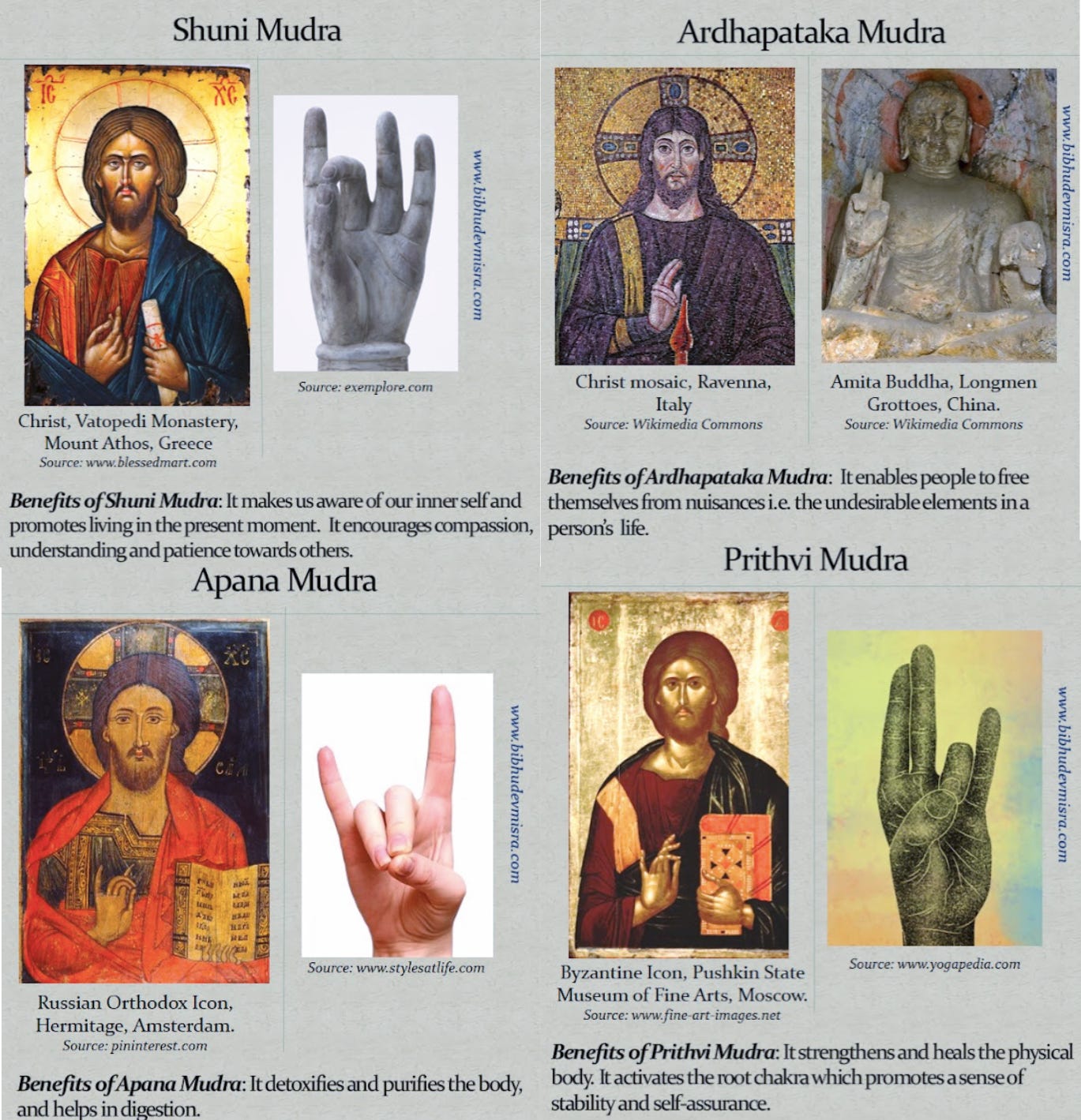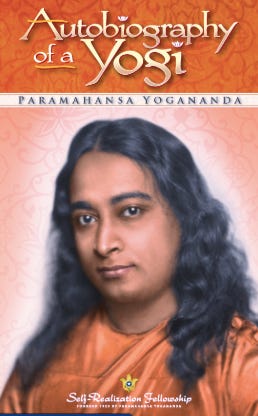Biography of a Yogi
Medicine, miracles and mystery
In the beginning was the word, but as demonstrated in part one, words can be tricky and unreliable.
After the whole Tower of Babel incident we have a hot mess of different languages, dialects, some of which are obsolete and best left to scholars of the archane to pick over and debate.
Thankfully, for the more right-brained folk amongst us, we also have images. There is some interesting speculation as to how our brains develop in infancy once language comes into play.
Prior to this we are feeling, emoting, sensory beings unaware of our separateness from our mother and connected to all things; animals, plants, food, teddy and blanket etc, but potentially capable of great insight and awareness. But noone really knows, because we’re too little and inarticulate to tell anyone.
Anthropologists have long pondered whether before the reliance on speech and writing, we encountered the world around us in a more visual and sensory manner - hence the endurance of symbology through prehistory and till now. What can pictures tell us, that words can’t?
Many early artists who portrayed Jesus chose to do so in images laden with symbolism. Often commissioned by the church to create masterpieces adorning holy places to inspire the faithful and assert the clerical gatekeepers’ spiritual and intellectual superiority - artists of antiquity, many of who were students of the esoteric themselves, snuck in clues on what, in their opinion, JC was really all about.
Early Byzantine images of Christ consistently depict him with hands in mudras – some of which yogis, qigong-ers, and healers amongst you will be very familiar with. The mudras continue in Orthodox Christian art until the Renaissance. Eastern Orthodox Christianity claim to have maintained the original teachings of the apostles, although nowadays these mudras are simply seen as blessings.
Our friend Bibhu Dev Misra (esteemed scholar of the Yuga cycles) blogged about this and collected examples of various images.
Does this evidence suggest, that Christ, the Apostles, and early waves of followers practiced meditation and the healing arts?
Many of the bible stories tell us about Jesus healing the sick, often by laying on of hands, or breathing with the afflicted person, sometimes healing remotely, and in some instances, reviving people who appeared to be dead.
The Christian Church interprets these as evidence of his divinity. And while this makes perfect sense, it is hardly the singular experience they would have us believe.
Healing, miracles, bi-location, appearing after death - there are countless stories in written and oral traditions, from all global cultures of adepts and sages who were able to perform such feats. Tales of the Daoist immortals, Vedic siddhis, shamans and gurus the world over have been celebrated in ancient myth and folklore of antiquity to the present day. Many of you will have read Paramahansa Yogananda’s Diary of a Yogi, and marvelled at the amazing shenanigans detailed throughout.
Even other saints within the Catholic Church are credited with miracles, although you need at least two I believe, for your posthumous application for canonisation to be seriously considered.
And there were even other miracle workers like Apollonius of Tyana, knocking about the Middle Eastern / Meditteranean basin during Christ’s lifetime, some of whom gained quite the following.
Gary Lachmann, estoteric scholar (and former keyboard player from side hustle, Blondie!) alludes to a hidden narrative in the Jesus story, in his brilliant book Secret Teachers of the Western World. He cites a letter from early church father Clement of Alexandria to some other fella, describing a secret gospel he found in Alexandria, written by Mark (of Mark’s Gospel fame) which referred to Christ’s teachings, “for the use of those being perfected.”
From Clement’s description, it sounds like Mark was talking about advanced ‘inner door’ teachings, taught to a select few Jesus had initiated into his VIP sanctum.
It’s unclear whether these were written down, and it seems unlikely that they would have been anyway. Those of you familiar with Eastern esoteric practices, ‘spiritual alchemy’ will know that there is less of a tradition of putting these into print where any old muppet can give them a go. These are practices that require training, dedication, and skill, imparted at the teacher’s discretion, potentially harmful for those who have not done the prerequisite groundwork, established correct technique, or demonstrated the right character.
This differs slightly from the Western tradition in which magickal texts and instruction manuals do exist. Some knowledge was kept ‘hidden’ through the centuries by secret societies, but then a character like Helena Blavatsky comes along, democratises it all, and now anyone can dive right in, if prepared to withstand the stench of patchouli and spend hours in their local occult bookshop.
Appealing as it is to the impatient and egalitarian Western mind, (why shouldn’t we all have access to the secret, cool stuff?!) left unchecked we soon get all sorts of weirdness with people like Aleister Crowley summoning the devil and / or aliens, all hell breaking loose (literally), and things skeetering uncontrollably from bad to worse. Especially for anyone personally engaging in the stuff. After all, Crowley went from being the globally renowned and celebrated bad boy of the Golden Dawn-era mystical revival, to dying in a bedsit in Hastings. And having spent some time in Hastings, I can tell you, that really is no way to go.
Back to Lachmann’s analysis. He likens the early Christian church to an occult lodge, suggesting Jesus’s habit of speaking in parables similar to Zen koans, using opaque and symbolic language lends itself to concealment as much as it does revelation.
Lachmann quotes from the Gospel of Thomas (one of the texts we’ll come to in Part 3).
“Split the wood and you shall find me”
“lift up a stone and I am there”
“whoever finds the meaning of these sayings will not taste death”
There’s a hint of Master Yoda here. And I, for one, am here for it.
But where did Jesus, whose earthly father at least was a humble blue-collar carpenter, learn all this high fallutin’ Eastern-style mysticism?
Good question!
One possible answer is that he went travelling in his extended GAP year period. We don’t have any accounts of his life from early teens to early thirties so what the heck was he up to? It is very possible that he travelled with his uncle Joseph of Arimathea, a wealthy tin merchant, to all sorts of interesting places.
Another is that there were plenty of mystery schools teaching these arts in his local neighbourhood, and they weren’t necessarily ‘Eastern’. There would have been plenty of homegrown Kabbalistic and Hermetic lore being taught on the down low, and as an inquisitive and prodigiously talented child, Jesus may well have been drawn to this area of study.
Once we start to look for signs and symbols, they really do pop up everywhere. As I learn more about Daoist and Yogic practices that seek to open or nourish the heart chakra, or middle dan tien, I wonder if they can give us some insight into the popular depiction of Jesus and the Sacred Heart?
One of my favourite accounts of mystical Jesus, details his time in The Essenes - a Jewish sect dated to the second century by many historians. It originates with one of AstroTerica’s favourites Delores Cannon and her collection of stories garnered from people she and her husband regressed into past life experiences under hypnosis.
Much of the material came from one girl, who in Cannon’s words was relatively uneducated and had never left the US. Under hypnosis the girl spoke Aramaic, and told the Cannons about her past life experience as a contemporary of Christ and Mary Magdalene studying together in the Essene community. Before compiling her books on the subject, Cannon played recordings of interviews to rabbinical scholars who confirmed details of ancient Kabbalistic knowledge, and language.
So, you see - we’re building a case for Jesus, the Mystic.
Even if Delores Cannon’s past life regression ain’t your bag, there is plenty of other evidence of the hidden story in ancient texts. We’ll return to these in part 3.
Stay tuned for the next AstroTerica Easter-themed epistle, coming soon.
Until next time!












If you can find a copy of this book I’m certain you will find it compelling; many untold stories of Jesus teachings: https://www.etsy.com/listing/1301718936/the-aquarian-gospel-of-jesus-the-christ